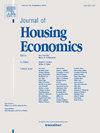While many western economies experienced substantial fluctuations in house prices since the turning of the century, the Irish residential market stands out as a particular case. Irish house prices experienced profound increases in the period leading up to the global financial crisis (GFC); thereafter the concomitant downturn in both the real Irish economy and financial sector precipitated a dramatic decline in prices between 2007 and 2012. However, since 2012 prices have increased in a sustained and persistent manner. A number of possible reasons are commonly cited for the recovery. In this paper we avail of a new housing and financial sector model, which are part of a broader macro-econometric model, COSMO, of the Irish economy to characterise the determinants of Irish house prices over the period 1995–2019 and in particular to examine the reasons for the post 2012 recovery. The suite of models are used to examine the contribution of developments in both monetary policy and financial stability as well as the performance of the real economy. The role played by the sluggish response of the supply-side of the Irish residential sector is also assessed. The supply-side of the Irish market was especially impacted by the GFC and has struggled to respond to the surge in housing demand which has accompanied the general economic recovery since 2012. Our results have interesting implications for the growing literature examining the intersection of monetary policy and financial stability on house prices.


